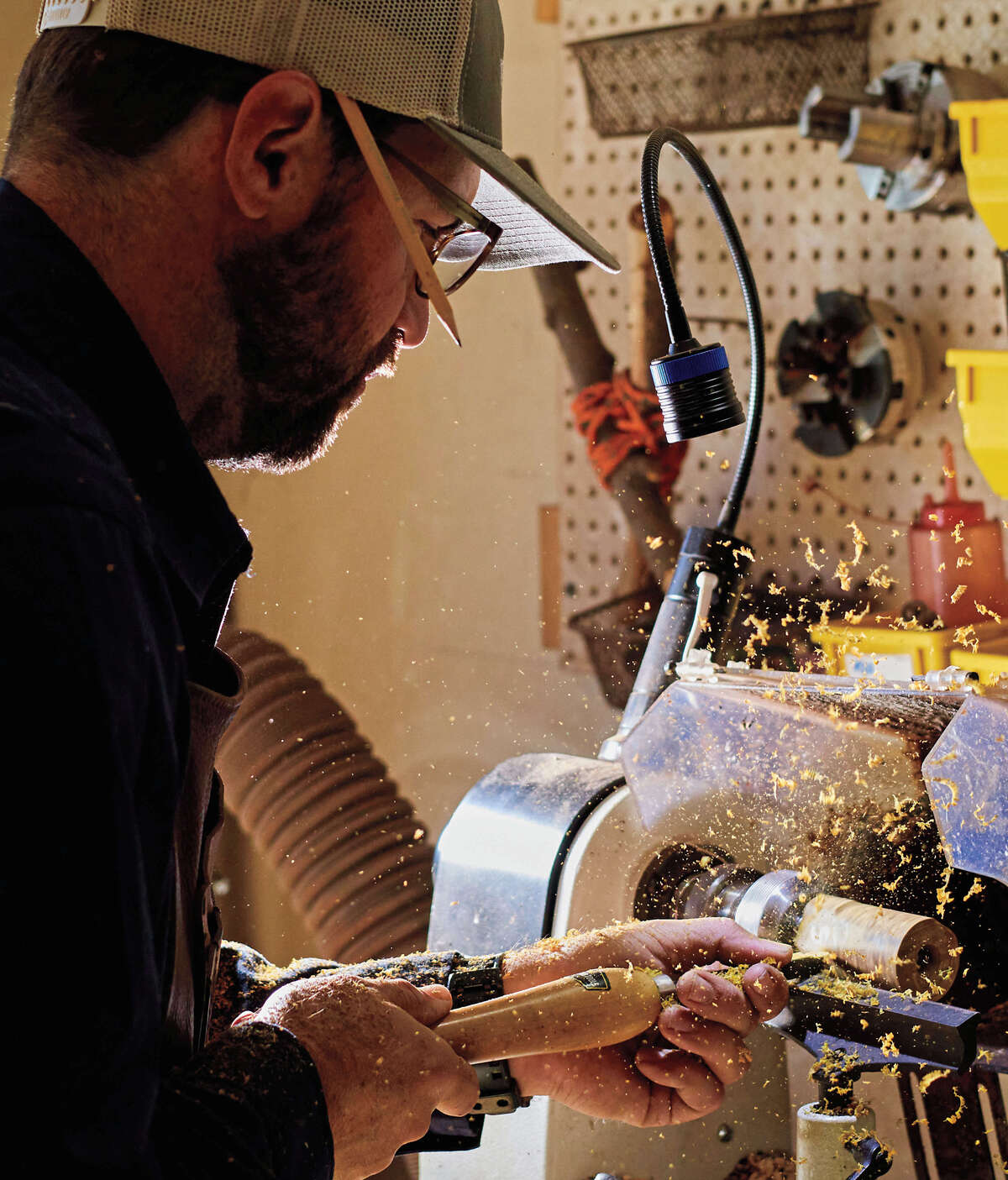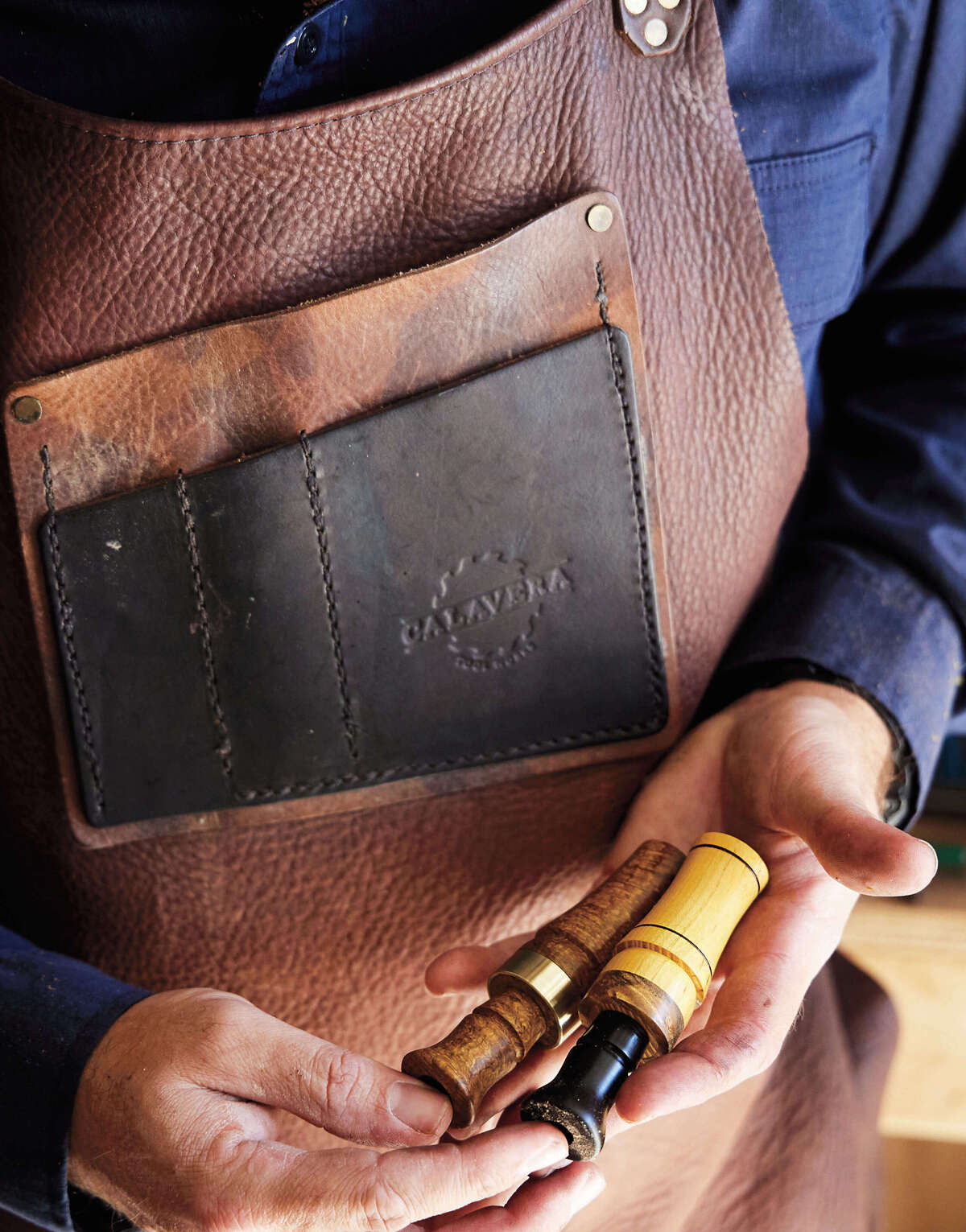Cupped Wings: Breathing Life into Wood
Making a duck call by hand is a unique combination of art and science
Making a duck call by hand is a unique combination of art and science


South Carolina call maker and waterfowling guide Joey D’Amico turns a call barrel in his garage workshop.
“Tell me what you want,” Joey D’Amico says. “Soft or loud? Do you want it to ring or be a bit more mellow?”
I hesitate and pull the chisel away from the wood spinning on the lathe. Wood dust swirls in the air as I think about this.
“I hunt a lot of beaver ponds and swamps,” I say. “Probably softer more so than loud.”
Joey nods. “OK. Then take just a little more off. You’ll be able to get somewhat loud with it, but the back pressure that keeps the sound soft will still be in the call. You’ll like that in a swamp.”
“Sounds good to me,” I say. “Especially since I have no idea what I’m doing.”
Joey is a pal of mine and a full-time duck-call maker on Johns Island, South Carolina, and a while back he offered to let me work with him to “turn” my own wooden duck call. When you think about people who are chasing their dreams, Joey should come to mind. He’s been a musician since he was a kid. He earned a college scholarship as a euphonium player. He’s also a rabid waterfowler who guides hunters from South Carolina to Saskatchewan, and he learned wood turning while working on a historic home restoration in Charleston. He went full-time about a year ago, which suggests two things: Joey is very good at making duck calls. And he has a very understanding wife.
To be honest, I’m not really making my own duck call. Joey lets me knock a bit of wood off the barrel blank and get it kinda-sorta close to a somewhat recognizable duck call-ish shape. Then I let him step in and work his magic.
At the lathe, I had been holding the chisel like it was a live snake. Joey wields it smoothly, like a conductor’s baton. He wears a leather shop apron and a Ticonderoga #2 pencil behind his ear, and he hums while he works, slightly bent over the whirring lathe.

Beautiful to behold, a well-crafted call must also sound like a duck.
The process fits his musical background. African blackwood, a common call material, is used in clarinets, oboes, and bassoons. Cocobolo can be used to make guitars, and it lends a more mellow tone to a call’s sound. Cherry and maple are choices, too, but Joey wonders a bit about them. Those woods are less dense than others, he says. “Air can move between the fibers of the wood, and that spreads out the volume of air that’s left to move down the tone channel.” Which is getting pretty deep into the weeds.
In fact, there is plenty of science married to the art of turning and tuning a duck call. A duck call sounds like a duck in large measure because of the interface between the reed and the toneboard, which is the flat piece of wood that the reed vibrates against. Down the middle of the toneboard is a groove that governs the rate of airflow through the call itself. The sound of a call is a dance between the reed’s shape and the toneboard’s radius, depth, and length. The tiniest changes can have a remarkable impact on volume, bass, and rasp.
Joey assembles the freshly turned barrel, insert, and reed. He blows the call, then pulls it apart and works an emery board across the toneboard to shave off an infinitesimal bit of material. He blows it again, disassembles it again, and with small scissors trims a hair’s width from the end of the reed. Then he blows again. “That’s it,” he says with a nod. “That’s what I’m looking for.”
The final product is a thing of beauty. But it takes a duck hunter to really appreciate Joey’s craft. He’s not just creating art. He’s breathing life into the wood, so that someone else, somewhere else, on a sunrise morning far away, can tease a duck out of it. And out of the sky, which is the point. But by then, of course, it’s all up to the hunter. My pal Joey will have done all he can do.
Ducks Unlimited uses cookies to enhance your browsing experience, optimize site functionality, analyze traffic, and deliver personalized advertising through third parties. By continuing to use this site, you agree to our use of cookies. View Privacy Policy